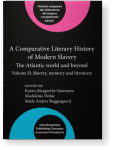Chapter 7
Bio-graphies in the broad sense
Narrating the lives and genomes of the enslaved
To what extent do bio-graphical writings, which treat the body and its traces as historical
archives in their own right, pose the same problems of interpretation and authorship as traditional biographies? This
chapter focuses on the case of Hans Jonathan (1784–1827), whose story has recently been ‘written’ in two different
forms: first, in the biography The Man Who Stole Himself (Gisli Palsson
2016); and second, through the scientific reconstruction of his genome. Our text explores the way biography
(in the traditional sense) and various bio-markers (personal names, written genealogies, and DNA sequences) have been
used to piece together Hans Jonathan’s life and trajectory and examines to what extent the genome can yield insights
into the identities of the enslaved.
Article outline
- Introduction
- Marked by race: The ‘mulatto’ Hans Jonathan
- Decoding the body
- The issue of paternity: Archival sources, family narratives, and DNA
- Competing evidence
- Conclusions
- Author queries
-
Acknowledgements
-
Notes
-
References
This content is being prepared for publication; it may be subject to changes.
